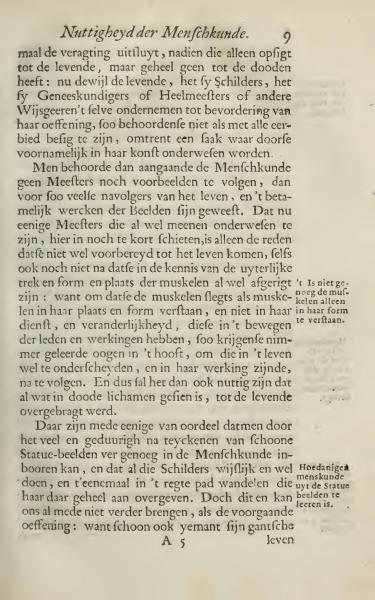Usefulness of Human Studies.
...outward neglect is expelled, as it only pertains to the living, and not at all to the dead: now because the living, whether painters or physicians or surgeons or other philosophers, undertake the same for the advancement of their practice, they should engage with all due respect in the matter that is primarily taught in their art.
Then concerning human studies, one should follow neither masters nor examples, except as followers of life itself, and the proper working of images. That there are some masters who believe they are already instructed and still fall short is simply because they are not well prepared for life, even after in-depth understanding of the external appearance, structure, and placement of muscles: because they understand the muscles only as muscles in their location and form, and not in their function and variability, which they have in the motion of the limbs and workings, they never acquire skilled eyes to discern them in life, and follow their operation. Therefore, it will also be beneficial to transfer what is seen in dead bodies to the living.
There are also some who believe that through continuous drawing of beautiful statue images, enough understanding in human studies can be gained, for those painters who wisely and correctly immerse themselves entirely in it. But this cannot take us further than preceding practice: for even if one is absorbed...
Translation Notes:
Menschkunde: Translated as 'human studies' or 'figure studies'.
The text discusses the importance of understanding human anatomy and form, particularly for artists and those in related fields, and notes that learning extends beyond observation of static forms to understanding the muscles' functions and movements. It emphasizes that true mastery requires transferring knowledge from studying both dead figures and living actions, and argues that practice with classic statues can be beneficial but is insufficient without deeper study.
